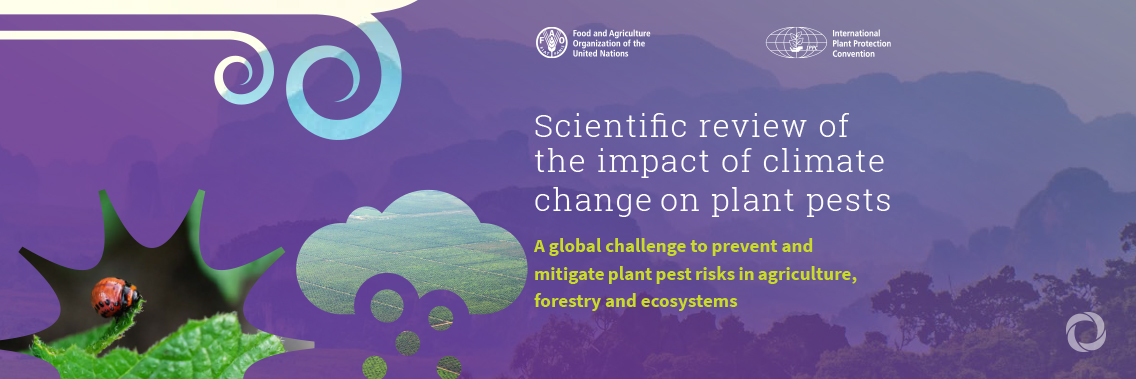Due to the impact of climate change, plant pests that ravage economically important crops are becoming more destructive and posing an increasing threat to food security and the environment, finds a scientific review released on Tuesday.
The Scientific Review on the Impact of Climate Change on Plant Pests – A global challenge to prevent and mitigate plant pest risks in agriculture, forestry, and ecosystems by Professor Maria Lodovica, University of Turin (Italy), and ten co-authors from around the world was prepared under the auspices of the Secretariat of the International Plant Protection Convention, hosted by FAO, and is one of the key initiatives of the International Year of Plant Health, which is coming to an end this month.
“The key findings of this review should alert all of us on how climate change may affect how infectious, distributed and severe pests can become around the world, the review clearly shows that the impact of climate change is one of the greatest challenges the plant health community is facing,” said the Director-General of the Food and Agriculture Organization of the United Nations (FAO), QU Dongyu, at the launch.
FAO estimates that annually up to 40 percent of global crop production is lost to pests. Each year, plant diseases cost the global economy over $220 billion, and invasive insects at least $70 billion.
How is climate change impacting plant pests?
The scientific review finds that climate change will increase the risk of pests spreading in agricultural and forestry ecosystems, especially in cooler Arctic, boreal, temperate, and subtropical regions. For example, a single, unusually warm winter may be enough to assist the establishment of invasive pests.
Some pests, like fall armyworm (which feeds on a growing number of crops, including maize, sorghum, millet) and Tephritid fruit flies (which damage fruit and other crops), have already spread due to warmer climate. Others, such as the desert locust (the world’s most destructive migratory pest), are expected to change their migratory routes and geographical distribution because of climate change. The review analyses 15 plant pests that have spread or may spread due to climate change.
Climate change-induced pest dispersal and intensity threaten food security as a whole. Smallholders, people whose livelihoods rely on plant health, and those who live in countries beset by food insecurity are especially vulnerable to these risks. Invasive pests are also one of the main drivers of biodiversity loss.
How to mitigate the impact on plants and crops?
The review puts forward a number of recommendations to mitigate the impact of climate change on plant health.
Chief among them, increased international cooperation is deemed crucial as the effective management of plant pests by one farmer or one country affects the success of others.
Improved measures to limit the international spread of pests through trade and travel and adjustments to plant protection protocols are equally important.
The review also stresses the need for more research into the impact of climate change on pests and hence, on plant health; and for more investments in strengthening national phytosanitary systems and structures.
“Preserving plant health is fundamental to achieve the Sustainable Development Goals. Sustaining plant health is an integral part of our work towards more efficient, inclusive, resilient, and sustainable agri-food systems,” stressed the Director-General.
Tackling climate change, biodiversity loss, and environmental degradation in one go
FAO believes that is crucial to respond to the interconnected challenges of climate change, biodiversity loss, and environmental degradation simultaneously.
This includes implementing the International Plant Protection Convention’s (IPPC) international standards for phytosanitary measures to prevent the introduction and spread of harmful plant pests and to preserve biodiversity.
“We stand ready to strengthen collaboration with the Intergovernmental Panel on Climate Change and others to ensure that phytosanitary matters are better reflected in the international climate change agenda,” said the Director-General.
Though the International Year of Plant Health is coming to an end, FAO and partners will continue to build on its legacy and raise awareness on how protecting plant health can help end hunger, reduce poverty, protect the environment, and boost economic development.

